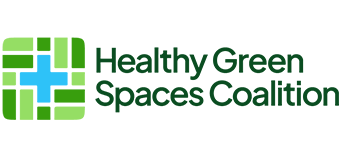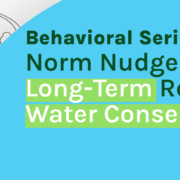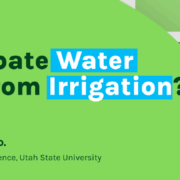How Tariffs are Reshaping Water Conservation Adoption
Executive Editor: Steve Whitesell
Expert Reviewer: Dr Charlie Hall
Economic uncertainty is redefining who adopts water conservation upgrades.
The Big Picture
Economic uncertainty is redefining who adopts water conservation upgrades.
Affluent homeowners are still moving forward with large, water-wise projects, while everyone else is scaling back to smaller, lower-risk improvements.
Even with rebates available, the fear of committing thousands upfront outweighs long-term savings.
What’s New
Dr. Charlie Hall, Professor and Ellison Chair in International Floriculture at Texas A&M University, is among the first to connect tariff uncertainty, consumer confidence, and conservation behavior.
His analysis shows that unpredictable material costs and broader economic unease are creating “planning paralysis” across the market—especially for projects above $5,000.
This finding reframes conservation adoption as an economic confidence issue, not just a matter of awareness or values—offering a new lens for how rebate programs should be designed and communicated.
The following is a summary of Dr Hall’s position on the impact of tariffs on residential water conservation rebates.
Why It Matters
Most rebate programs were designed for stable economies, assuming homeowners make rational, ROI-based decisions.
But when financial anxiety rises, psychology overrides logic. Homeowners are deferring $10,000 turf-removal projects—even with 30-50% rebates—because liquidity feels safer than efficiency.
Without adjusting for this emotional barrier, utilities risk watching participation stall despite strong incentives.
Tariff Uncertainty Creates Planning Paralysis
“The impact of current tariffs on home improvement costs cannot be overstated,” says Dr. Charlie Hall, Professor and Ellison Chair in International Floriculture at Texas A&M University. “Projects are seeing cost increases, with building material costs up 34% since December 2020.”
Supply chain disruptions and tariffs have pushed the cost of growing chlorophyll up by 22% in just the last five years alone, affecting everything from nursery stock to the plants that form the foundation of water-wise landscapes.
But perhaps more damaging than the price increases themselves is the uncertainty they’ve created.
Dr. Hall notes,
“Confusion over tariff timing is having a chilling effect on the market, as both consumers and contractors struggle to plan when they cannot predict what materials will cost from one month to the next.”
This planning paralysis affects every stage of the water conservation pipeline, from landscape architects designing projects to homeowners trying to budget for them.
Income Divides the Market at the $5,000 Mark
“This uncertainty is hitting different income brackets in dramatically different ways.”
Dr. Hall explains. “High-income households earning over $150,000 actually increased their home improvement spending to nearly $22,000 in 2024, even as overall average spending dropped 12% to around $12,000.”
Wealthier homeowners can absorb both the higher costs and the planning uncertainty, continuing to invest in major water-wise projects that align with their environmental values and long-term property goals.
Meanwhile, middle- and lower-income households are pulling back sharply.
“Consumer sentiment data reveals a striking pattern,” Dr. Hall observes. “About two-thirds of homeowners believe it’s a bad time to start projects costing more than $5,000, while 70% feel comfortable with projects under that threshold.”
This creates a clear dividing line in the water conservation market.
Smart irrigation controller upgrades, which typically cost under $500 even before rebates, fall comfortably within most homeowners’ comfort zone. Drip irrigation conversions, mulch application, and selective native plantings can often stay below the $5,000 mark as well.
But lawn replacement with hardscaping, native trees, or extensive drought-tolerant landscaping, the cornerstone of many utility rebate programs—often runs $5,000 to $15,000. These projects get deferred, even when rebates of $2 to $4+ per square foot are available.
Financial Anxiety Overwhelms Long-Term Savings
“Consumer confidence has been declining steadily throughout 2025, with measures from both the University of Michigan and the Conference Board showing month-over-month drops. Some indicators are even signaling potential recession.” Dr. Hall said.
“In this environment, homeowners are prioritizing financial security over multi-year water bill savings, no matter how compelling the math might be,” Dr. Hall notes.
The return-on-investment calculation that water utilities use to promote conservation upgrades assumes a rational, financially secure homeowner with a long planning horizon. But as Dr. Hall points out, most home renovations deliver only 50-74% cost recovery at resale, meaning homeowners must value the long-term benefits beyond immediate financial return.
For lower- and middle-income households facing economic uncertainty, that’s an increasingly difficult sell.
Younger homeowners under 44—the oldest Millennials and Gen Xers—are particularly worried, with heightened concern about simply affording basic home maintenance in 2025. Overall, 61% of homeowners express worry about these costs. When you’re anxious about covering essential repairs, investing several thousand dollars in landscape transformation—even with a 30-50% rebate—feels like a luxury you can’t afford.
DIY Culture Highlights the Limits of Cost-Cutting
The shift toward do-it-yourself projects reveals both the cost-consciousness of the current moment and its limitations for water conservation.
DIY completions held steady in 2024, with nearly three-quarters of homeowners citing cost savings as their primary motivation. Small irrigation upgrades like smart controllers or drip conversion kits are DIY-friendly and deliver immediate water savings, making them ideal projects for budget-conscious homeowners.
But major landscape redesigns almost always require professional installation, putting them out of reach for homeowners trying to save on labor costs.
You can’t DIY your way into a comprehensive native plant landscape or a professionally designed hardscape that eliminates 1,000 square feet of lawn. The very projects that deliver the most significant water savings are the ones that resist the DIY approach that economic conditions are driving.
Spending patterns show homeowners are choosing smaller-scale projects that deliver concentrated impact.
Kitchen remodels under 200 square feet saw spending increase 9% while overall median spending dropped, suggesting that people want visible results in manageable scope—exactly the opposite of what a complete lawn transformation requires. Meanwhile, housing market starts are down significantly, which means the creation of new turf and landscaping has declined as well, further shrinking the pool of potential rebate adopters.
What’s Next for Residential Water Conservation?
The next frontier for conservation programs will be reducing perceived risk, not just cost.
That means shifting from large, one-time rebates toward staged or “stepped” incentives that reward incremental progress—like upgrading to smart irrigation controllers before tackling full landscape conversions.
Utilities may also need to communicate payback timelines and stability guarantees more clearly to rebuild homeowner confidence.
Until financial optimism returns, the programs that succeed will be those that make conservation feel achievable now, not aspirational someday.
















